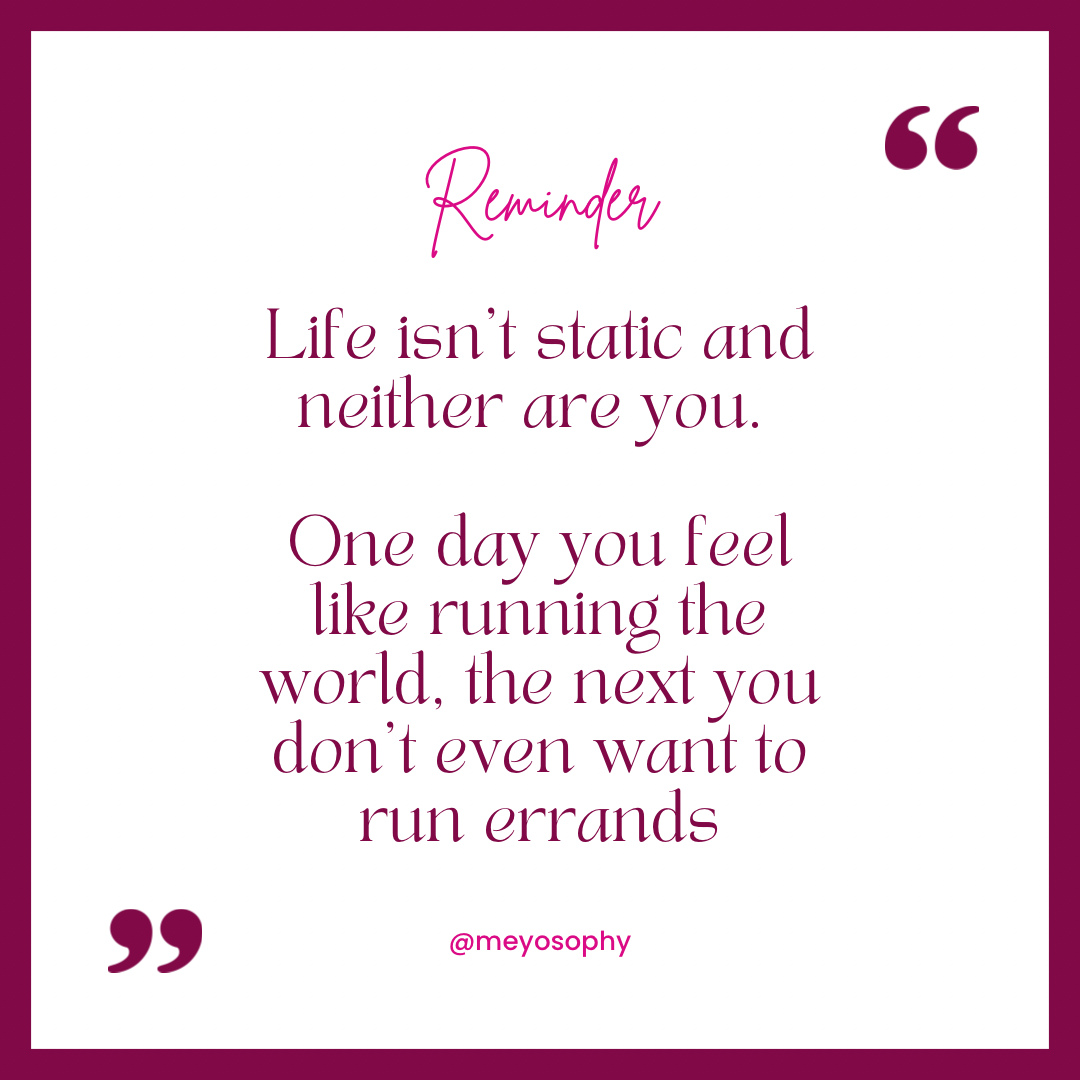Tracking your mood can feel like a tiny act of self-care or, if you let it, a spiralling project that takes over your life. The difference is how you do it. With small, consistent checks you can learn useful patterns about what helps (and what hurts) your mental health, without becoming the person who refreshes the app sixty times a day.
If you want a low-effort, high-impact approach, this post will walk you through several simple mood tracker methods you can do in 1–2 minutes per day, what you’ll actually learn from the data, and how to avoid the most common traps.
Why Track Your Moods at All?
Life isn’t static, and neither are you. One day you feel like running the world, the next you don’t even want to run errands. Tracking your moods can help you:
- Spot triggers → Maybe your anxiety spikes after too much caffeine or your energy crashes when you skip lunch.
- See long-term patterns → A few bad days are normal, but a steady low might be worth bringing up with a professional.
- Understand yourself better → You’ll learn how your emotions connect to sleep, food, hormones, or even the weather.
Research suggests that self-monitoring emotions can improve self-awareness and support mental health treatment progress[1]. The key is keeping it simple. Otherwise, tracking becomes another stressor.

How to Keep It Healthy (and Not Obsessive)
Here are a few ground rules:
- Stick to once a day – Don’t track every hour. That’s when it becomes stressful.
- Focus on the big picture – Your mood doesn’t have to be “perfect.” You’re looking for patterns, not perfection.
- Pair it with kindness – If you notice a bad week, don’t beat yourself up. The goal is awareness, not judgment.
Think of it like checking the weather. You don’t panic when it rains, you just grab an umbrella. Mood tracking works the same way.
7 simple mood trackers you can start today (1–2 minutes each)
Below are methods you can pick from. Try one for a week and then tweak.
1) One-number check (30 seconds) — The 1–5 Scale
- Morning or evening, rate your mood from 1 (low) to 5 (great).
- Add one word: “tired,” “calm,” “anxious,” “content.”
Why it works: super-fast, creates a weekly average you can scan in seconds.
2) Traffic-light check (1 minute)
- Green = go (ok), Yellow = meh (warning), Red = stop (needs attention).
- Bonus: write down what likely triggered yellow/red.
Why it works: visual, low judgment, good for people who dislike numbers.
3) Three-question check (90–120 seconds)
Ask yourself:
- How am I feeling right now? (one word)
- What likely caused this feeling? (one phrase)
- What small thing would help me right now? (one action)
Why it works: adds context and a micro-action plan.
4) Emoji or color swipe (30–60 seconds)
Pick an emoji or color to represent your mood and drop it into a note or app. Over time, you’ll see color clusters.
Why it works: playful, low-pressure, great for beginners and teens.
For example:
- 😊 Good
- 😐 Meh
- 😞 Low
- 😡 Stressed
- 😴 Tired
This visual method works great if you’re someone who hates writing things down. Plus, it’s fun to look back at your “emoji map” over a month.
5) The Two-Minute Journal
If you prefer a slightly deeper check-in, use this short format:
- Mood (1–5 scale):
- Energy (1–5 scale):
- Highlight of the day:
- One challenge:
Done in under 2 minutes. Over time, you’ll notice how energy and mood align (or don’t).
6) Micro-journal voice note (1–2 minutes)
Record a 60-second voice note: rate mood, one sentence about why, one sentence about what helped.
Why it works: less friction than typing and captures tone.
7) One-question evening review (2 minutes)
End your day with 1 question: “What one thing today affected my mood most?” Write one sentence.
Why it works: anchors learning and builds a weekly “cause-effect” list.
How to keep mood tracking from becoming obsessive
Some people fall into a habit of checking again and again. Here’s how to avoid that:
- Limit checks. One morning, one evening, and perhaps one midday if needed. Set reminders and resist manual re-checks.
- Time-box it. Use a 2-minute timer. When it dings, you’re done.
- Shift focus to weekly learning. Don’t react to every dip. Collect a week of data, then review.
- Skip judgment. Replace “I’m failing” with “Interesting, that’s just data.”
- Look at a weekly chart or weekly average rather than day-to-day spikes. Apps and simple spreadsheets do this automatically.
- Share patterns, not every datapoint. Bring summaries to therapy rather than raw minute-by-minute logs.
If tracking increases anxiety (e.g., you obsessively check), take a break and talk to a therapist about a safer approach.
What You Can Learn From a Simple Mood Tracker
Using a simple mood tracker daily can teach you surprising things about yourself. Here are a few patterns people often discover:
- Sleep is everything → Notice how many “bad mood” days follow a poor night’s sleep.
- Food and caffeine matter → Skipping meals or having that third coffee might make you anxious or cranky.
- People influence your emotions → A quick glance at your notes might show you feel calmer after seeing supportive friends.
- Seasons affect you → For some, winter brings more low moods; for others, summer heat drains energy.
Research shows that mood tracking can help people detect mood episodes earlier and improve communication with therapists[2]. Use the weekly and monthly review questions to gain some extra insight.

Simple Mood Tracker Tools You Can Try
You don’t need anything fancy, but here are some easy tools if you’d like a bit of structure:
- Paper calendar → Just mark each day with a color or emoji.
- Apps like Daylio or Moodnotes → Great for quick daily check-ins.
- Bullet journal → If you like being creative, make a mood “color key” and track with doodles.
- Notes app or journal → Use prompts like the ones in this article. Simple but effective.
The key is: whichever method feels easiest, use that one. Don’t overcomplicate.
Quick troubleshooting
- If you forget: Set a phone reminder or tie it to an existing habit (after brushing teeth).
- If you feel judged by numbers: Switch to colors or words.
- If it makes you worry more: Reduce to once every other day, or pause for a week.
Final thoughts
A simple mood tracker is not a test you can fail. It’s a tool for curiosity. Start with one tiny method above, even a single number and one word, and give yourself permission to experiment. If the practice helps, you’ll see the value in that weekly review; if it doesn’t, you’ll have learned something useful about how you relate to self-monitoring.
Either way, a small, consistent check-in can turn vague unease into clear signals and that’s the first step toward gentle, practical change.
References
[1] Kauer, S. D., Reid, S. C., Crooke, A. H., Khor, A. S., Hearps, S. J., Jorm, A. F., & Patton, G. (2012). Self-monitoring using mobile phones in the early stages of adolescent depression: Randomized controlled trial. Journal of Medical Internet Research, 14(3), e67. https://doi.org/10.2196/jmir.1858
[2] Bauer, M., Grof, P., Rasgon, N., Marsh, W., Munoz, R., Sagduyu, K., … & Whybrow, P. C. (2006). Self-reported data from patients with bipolar disorder: mood charts and their value in the longitudinal course of illness. Acta Psychiatrica Scandinavica Supplementum, (426), 39–44.
Disclaimer: I’m not a mental health professional, everything here is shared from research and personal experience. If you’re feeling overwhelmed or need support, please consider talking to a qualified professional. You’re not alone. If you’re in the U.S., you can call or text 988 anytime. For help in other countries, visit https://findahelpline.com.


One thought on “How to Track Your Moods (Simple Mood Tracker Guide)”